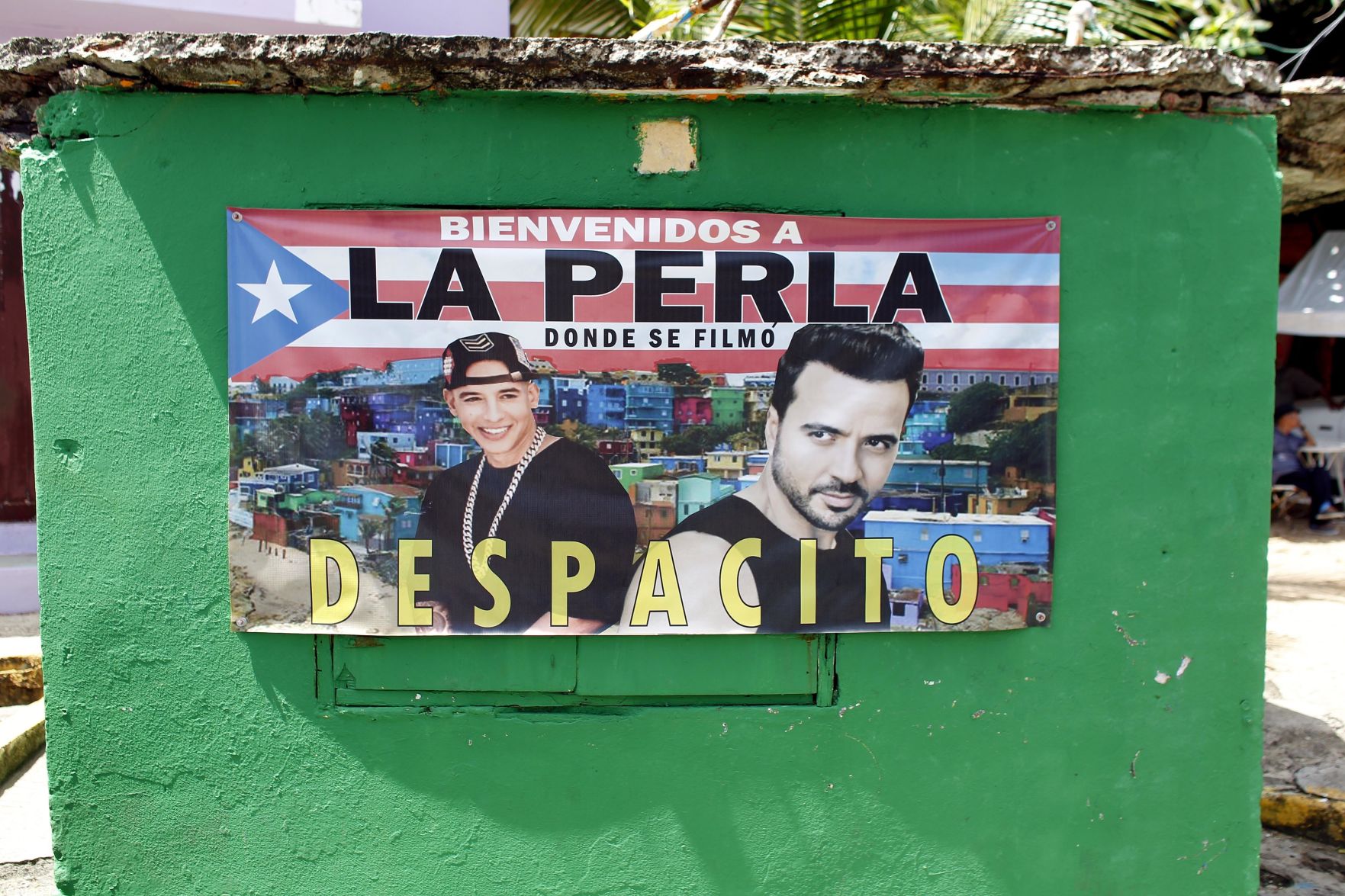SAN JUAN, Puerto Rico (AP) — Hope had come in with a song for La Perla, a seaside slum that had long been notorious as a violent enclave that served as Puerto Rico’s biggest distribution point for heroin.
The sound of clicking cameras and excited chatter had begun to break the morning silence. Tourists rambled through the narrow streets lined with brightly painted homes. Restaurants and other shops were popping up, catering to tourists drawn by the setting for the video of the worldwide hit song “Despacito,” which had been viewed billions of times since its release in January.
Then Hurricane Maria hit, ripping away power lines, water service, rooftops and even the newly installed banners that directed tourists to spots shown in the famed video.
With tourism to Puerto Rico as a whole abruptly halted, the only visitors to La Perla since the Sept. 20 storm have been people like the U.S. National Park Service workers who came to distribute bottles of water.
“Right now we’re all mired in a depression,” said Carmen Perez, a 77-year-old retiree who joined dozens of other La Perla residents with outstretched arms to receive the donated water.
One of the businesses that had boomed since “Despacito,” the La Garita restaurant, lost all four concrete walls to the hurricane, leaving only the kitchen standing.
“People didn’t use to fit in here,” said owner Ibilson Morales as he gestured toward the largely vacant spot where his restaurant once stood. “This used to be the most visited neighborhood in Puerto Rico.”
La Perla is a sort of scenic shantytown of about 350 people that emerged more than a century ago on a narrow strip of Atlantic shoreline between the crashing waves and the towering walls of Old San Juan. Few outsiders ventured through the handful of entrances to the place, nor were they welcome. At one spot, a wooden sign proclaimed: “Not open to visitors. Do not enter.”
“Before, people were very afraid,” said Angel Antonio Lopez, a 77-year-old La Perla resident.
The neighborhood’s dark reputation was stoked by an old video showing a drug dealer run up to another during the day and shoot him several times point-blank in the head. A self-described hit man turned federal witness said the bodies of many people killed in La Perla were tossed into the sea so sharks would eat them.
A bright yellow line painted on one of its narrow streets served as a boundary between rival drug dealers, some of whom used poisonous frogs to protect their drug stashes.
Much of the criminal activity was shut down when hundreds of agents from the U.S. Drug Enforcement Administration raided the slum in 2011 and arrested dozens of people, including a well-known community leader, who was later convicted.
Government and private-sector initiatives were launched to try to clean the place up. A new bakery was built, and houses were painted bright colors.
Then came “Despacito.”
Puerto Rican singers Luis Fonsi and Daddy Yankee chose the slum as a backdrop for their video, which YouTube said attracted a record 3 billion views, and tourists began to pour in, greeted by welcoming calls from a bar owner and by a street vendor offering fried snacks and cold beers.
Many people in La Perla had hoped the transformation would help secure the community’s future and protect it from real estate interests who have long eyed the seaside neighborhood as a prime spot for redevelopment.
The newfound vibrancy even prompted a visit by the island’s tourism secretary, Jose Izquierdo.
“No one had given La Perla a chance,” he said. “The song has helped break down the community’s stereotypes and given the people of La Perla a chance to organize themselves and take advantage of this historic opportunity.”
Among those hoping the opportunity returns is 26-year-old Yentil Ramirez, who had guided visitors on newly organized tours of the neighborhood.
“We have faith that they’ll come down again like they used to before,” she said, adding that Fonsi visited La Perla to distribute aid in recent days and promised to return to help with reconstruction efforts.
Fonsi has become the new face of Puerto Rico’s government tourism company, getting $700,000 as part of a deal in which the agency acquired rights to use the song. Tourism officials said searches for Puerto Rico on booking sites had increased as much as 45 percent in the months before the hurricane — a spike they attributed to the song’s popularity.
Now, the people flying into Puerto Rico are mostly volunteers, rescue crews and government officials helping to rebuild an island devastated by a Category 4 storm.
Tourism officials recently met with La Perla local leader Yashira Gomez, a daughter of the community leader arrested by the DEA in 2011. They asked her how long she thought it would take before La Perla could welcome tourists again.
“We told them to give us a month or two, that we were going to rise up again,” Gomez said. “We are looking for any kind of help … so that tourists can come back and see that La Perla is still pretty, that it’s on its feet and that we’re working hard to make it shine like before.”






